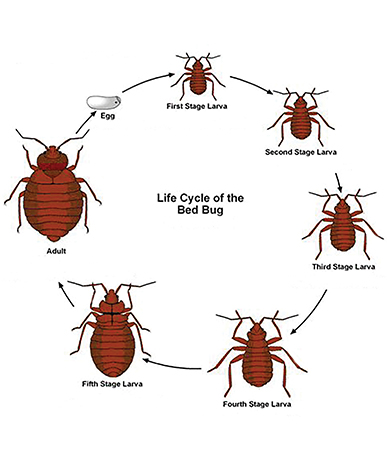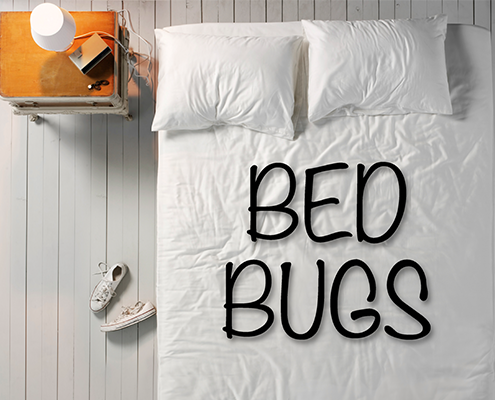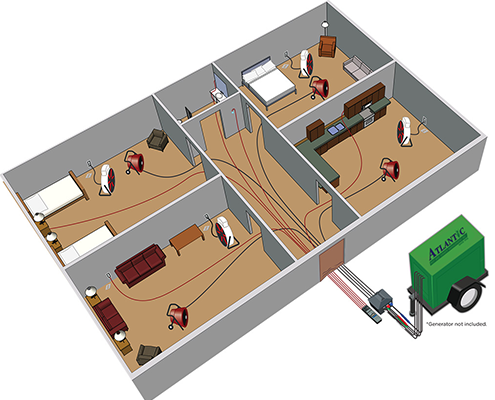WHAT DO THEY LOOK LIKE?
Bed bugs are small insects with flat, wingless, oval-shaped bodies. They have six legs and two antennae. Other distinguishing characteristics include:
Unfed adults are mahogany to rusty brown in color. After a blood meal, bed bugs turn reddish-brown. Nymphs, or baby bed bugs, are nearly colorless when they first hatch and become more brown as they mature. Adult bed bugs are about 1/4 inch long and are compared to apple seeds or lentils in size. The nymphs are even smaller.
ARE BED BUGS DANGEROUS?
Unlike many other pests, bed bugs are not known to spread any specific diseases. However, they are considered to be a public health pest due to the extreme difficulty of controlling them and the mental health implications often triggered by infestations such as sleeplessness, anxiety and social isolation.
SIGNS OF AN INFESTATION
- SMALL REDDISH-BROWN fecal spots on bed linens and mattresses.
- MOLTED SKINS. Bed bugs leave behind their molted skins and white, sticky eggs.
- SWELLING AND ITCHY welts on legs, arms and other body parts. Although bed bug bites are painless upon first contact, most people develop an allergic reaction to the saliva injected by the bug as it feeds, which may itch for days. However, some people do not have reactions to bed bug bites at all.
WHERE DO THEY HIDE?

Bed bugs are excellent hitchhikers and are easily transported. They like to hide in small cracks and crevices close to a human environment. Contrary to popular belief, bed bugs are not just found in beds. They can hide in the following locations:
• Linens and upholstery
• Furniture crevices and wood trim
• Electrical boxes and outlets
• Behind wallpaper, picture frames & baseboards




